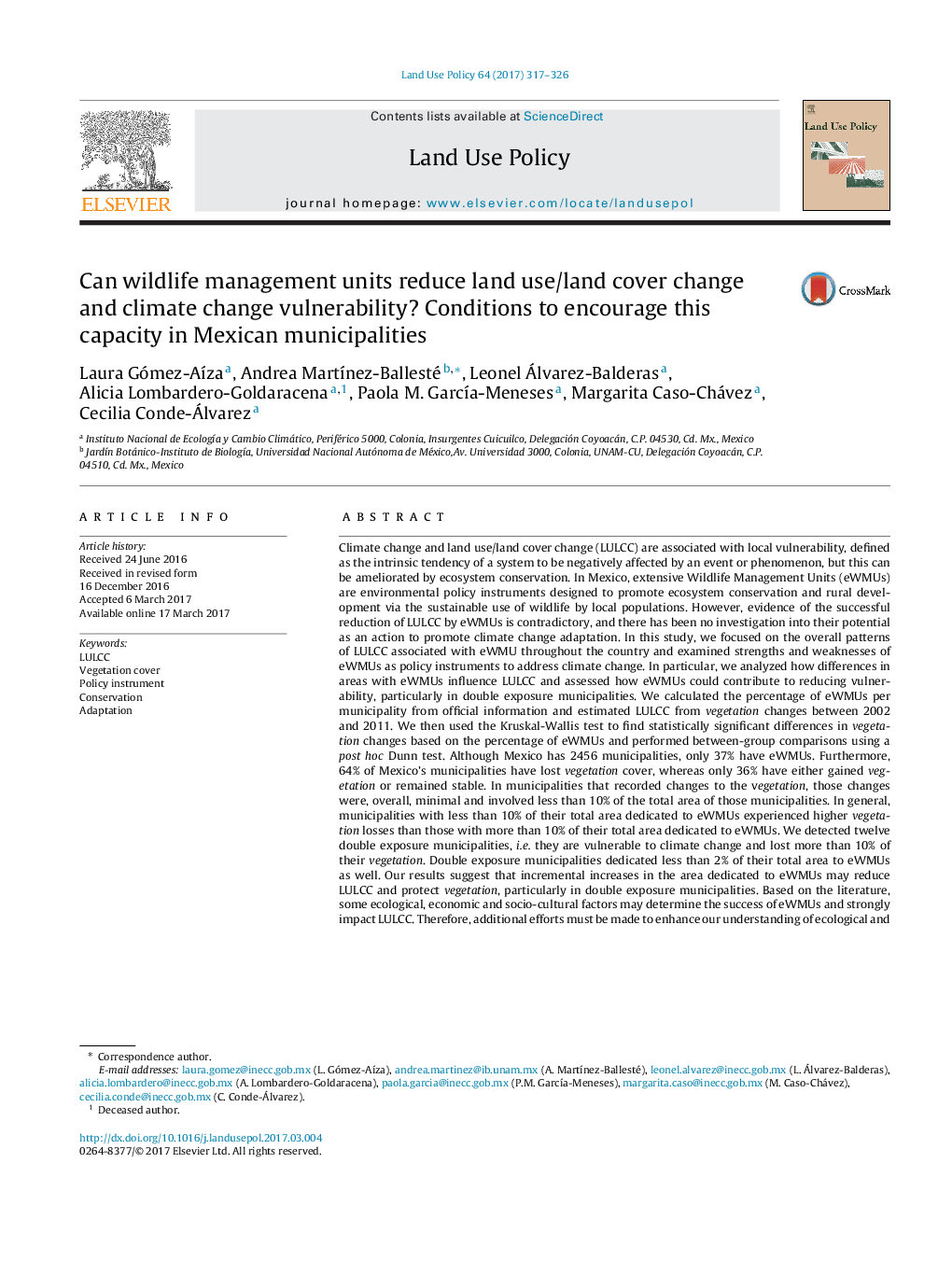| کد مقاله | کد نشریه | سال انتشار | مقاله انگلیسی | نسخه تمام متن |
|---|---|---|---|---|
| 6460846 | 1421819 | 2017 | 10 صفحه PDF | دانلود رایگان |
Climate change and land use/land cover change (LULCC) are associated with local vulnerability, defined as the intrinsic tendency of a system to be negatively affected by an event or phenomenon, but this can be ameliorated by ecosystem conservation. In Mexico, extensive Wildlife Management Units (eWMUs) are environmental policy instruments designed to promote ecosystem conservation and rural development via the sustainable use of wildlife by local populations. However, evidence of the successful reduction of LULCC by eWMUs is contradictory, and there has been no investigation into their potential as an action to promote climate change adaptation. In this study, we focused on the overall patterns of LULCC associated with eWMU throughout the country and examined strengths and weaknesses of eWMUs as policy instruments to address climate change. In particular, we analyzed how differences in areas with eWMUs influence LULCC and assessed how eWMUs could contribute to reducing vulnerability, particularly in double exposure municipalities. We calculated the percentage of eWMUs per municipality from official information and estimated LULCC from vegetation changes between 2002 and 2011. We then used the Kruskal-Wallis test to find statistically significant differences in vegetation changes based on the percentage of eWMUs and performed between-group comparisons using a post hoc Dunn test. Although Mexico has 2456 municipalities, only 37% have eWMUs. Furthermore, 64% of Mexico's municipalities have lost vegetation cover, whereas only 36% have either gained vegetation or remained stable. In municipalities that recorded changes to the vegetation, those changes were, overall, minimal and involved less than 10% of the total area of those municipalities. In general, municipalities with less than 10% of their total area dedicated to eWMUs experienced higher vegetation losses than those with more than 10% of their total area dedicated to eWMUs. We detected twelve double exposure municipalities, i.e. they are vulnerable to climate change and lost more than 10% of their vegetation. Double exposure municipalities dedicated less than 2% of their total area to eWMUs as well. Our results suggest that incremental increases in the area dedicated to eWMUs may reduce LULCC and protect vegetation, particularly in double exposure municipalities. Based on the literature, some ecological, economic and socio-cultural factors may determine the success of eWMUs and strongly impact LULCC. Therefore, additional efforts must be made to enhance our understanding of ecological and climatic processes; habitats must be monitored using a standardized methodology; biological, cultural, economic and institutional diversity must be incorporated into the planning, implementation and monitoring of eWMUs; and agreements must be established to strengthen social organization and human capital. Taking all this into account, we suggest that reducing vulnerability and improving double exposure areas by increasing the number and interconnectedness of eWMUs could represent an effective strategic approach at the municipal level to address LULCC and climate change.
Journal: Land Use Policy - Volume 64, May 2017, Pages 317-326
